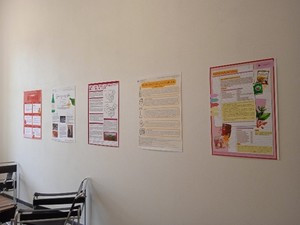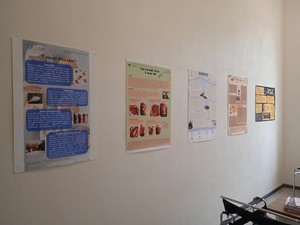Material Culture Laboratory (MatKulLab)
About us
Where can you find us?
Tř. Svobody 26, vestibule 2.19, rooms 2.20, 2.21, 2.22
Who works in the lab?
Mgr. Kateřina Šamajová, Ph.D.
RNDr. Pavla Kučerová, Ph.D.
RNDr. Lukáš Kučera, Ph.D.
What do we do?
We are a unique structure based at FF UP and the Department of Asian Studies, which focuses on advanced chemical analyses of organic and inorganic samples and their imaging. We examine all types of material artefacts from Eurasia, especially food and beverages, jewellery, plant seeds, fabrics, and other archaeological artefacts. We utilise technologically advanced methods for the examination and 3D imaging of large objects and structures or to analyse the content and composition of objects we study. Our research is specifically focused on so-called experimental philology, whose main attribute is the reproducing of ancient and lost processes producing material artefacts based on records in primary sources, or from reconstructions available from archaeological finds and subsequent chemical analyses.
What instruments can you find here?
- Raman microscope (Nicolet DXR2): used to identify the chemical composition of solid or liquid samples, e.g. waxes, gels, pastes, fibres, pieces of wood and other natural samples, minerals and pieces of metals, etc. Suitable for qualitative and quantitative analysis.

- Infrared spectrometer (Nicolet iS50): used to investigate the chemical composition of all kinds of samples (gaseous, liquid, solid) such as natural products, organic and inorganic pigments or minerals. Suitable for qualitative and quantitative analysis in the far and mid-infrared.

- X-ray Fluorescence Spectrometer (Olympus VANTA Education): - Mobile handheld device used for non-destructive analysis of solid samples, including metals, alloys, coins, natural samples and minerals. Suitable for qualitative and quantitative analysis.

- Scanning electron microscopy (Tescan VEGA) with energy dispersive X-ray spectrometer (EDX): electron microscopy is used to describe the morphology and surface composition of the samples analysed, both in their native state and in stained or impregnated samples. It is mainly used for the analysis of glass, metal alloys, ceramics, wood, seeds, textile fibres, paper, minerals, coins, etc. The system can operate under high and low vacuum conditions and use a set of different detectors (SE, BSE, LVSTD, EDX). The energy-dispersive X-ray spectrometer can be used not only to determine the content of different elements in a sample but also to visualise their content in samples (element mapping) using a confocal microscope.

- 3D scanner for architectural objects (Leica RTC360-Lite 3D Laser scanner): a mobile scanner using a near-infrared laser (1550 nm) that does not damage the human eye. The scanner can automatically scan 360° horizontally and 300° vertically at a speed of 1 million points per second. It can scan objects from 0.5 m to 130 m with high accuracy. The scanning overlaps with a 432 MPix spherical image taken by an HDR camera. It can also scan larger artefacts together with their surroundings, capturing details that optical cameras cannot.

Specialised courses, workshops and other events
MatKulLab provides regular teaching of these specialised courses:
- Fermented foods and beverages in East Asia - history and present (DAS/KVAS),
- Fermentation practices in East Asia (DAS/FERM),
- Fermentation Chemistry (ACH/KVAS),
- Fermentation Chemistry tutorial (ACH/FERM),
- Archaeometry (ACH/ARCH), Material Cultural Heritage Archaeometry (ACH/AHKD)
You can find us regularly at events such as Scientists' Night, lectures for the University of the 3rd Age, etc.
We regularly organise poster galleries (student posters based on courses taught) In vestibule 2.19.


Current projects
- Thesis supervision (a list of currently offered topics can be found here)
- Cooperation with the Experimental Brewery of Palacký University (EUREKA)
- Grant applications (OP JAK, IGA, GAČR, COST Actions)
- We primarily collaborate with the Department of Analytical Chemistry (Faculty of Science, PU), the Archaeology Section of the Department of History (Faculty of Arts, PU), the Department of Botany (Faculty of Science, PU)

